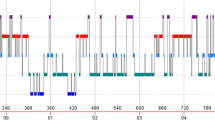Abstract.
Sleep is regulated by homeostatic and circadian factors, and the regulation of sleep of mammals shares many molecular properties with the rest state of submammalian species. Several brain structures take part in waking: the basal forebrain, posterior and lateral hypothalamus, and nuclei in the tegmentum and pons. Active sleep mechanisms are located to the preoptic/anterior hypothalamic area. In addition to acetylcholine and monoamines, glutamate and hypocretin/orexin are important waking factors. Gamma-aminobutyric acid and several peptide factors, including cytokines, growth hormone-releasing hormone and prolactin, are related to sleep promotion. Adenosine is an important homeostatic sleep factor acting in basal forebrain and preoptic areas through A1 and A2A receptors. Prolonged waking activates inducible nitric oxide synthase in the basal forebrain, which through energy depletion causes adenosine release and recovery sleep. Numerous genes have been found differentially displayed in waking compared with sleep, and they relate to neural transmission, synaptic plasticity, energy metabolism and stress protection. The genetic background of a few sleep disorders has been solved.
Similar content being viewed by others
Author information
Authors and Affiliations
Corresponding author
Rights and permissions
About this article
Cite this article
Stenberg, D. Neuroanatomy and neurochemistry of sleep. Cell. Mol. Life Sci. 64, 1187 (2007). https://doi.org/10.1007/s00018-007-6530-3
Published:
DOI: https://doi.org/10.1007/s00018-007-6530-3




